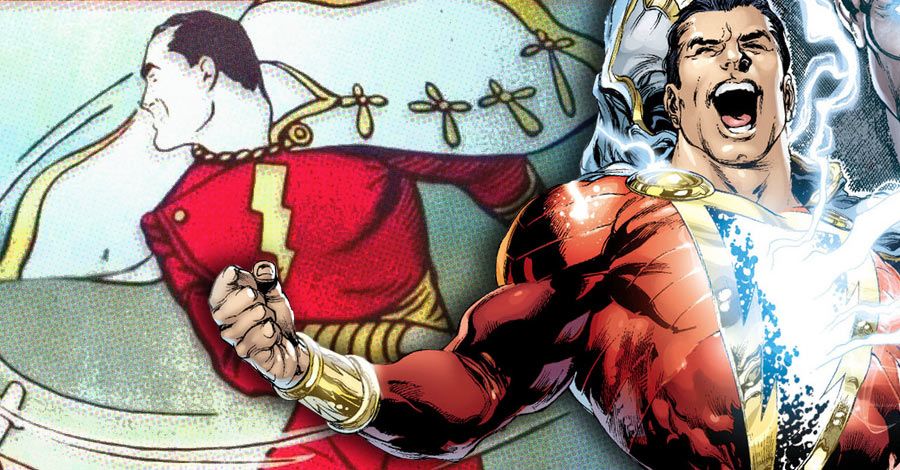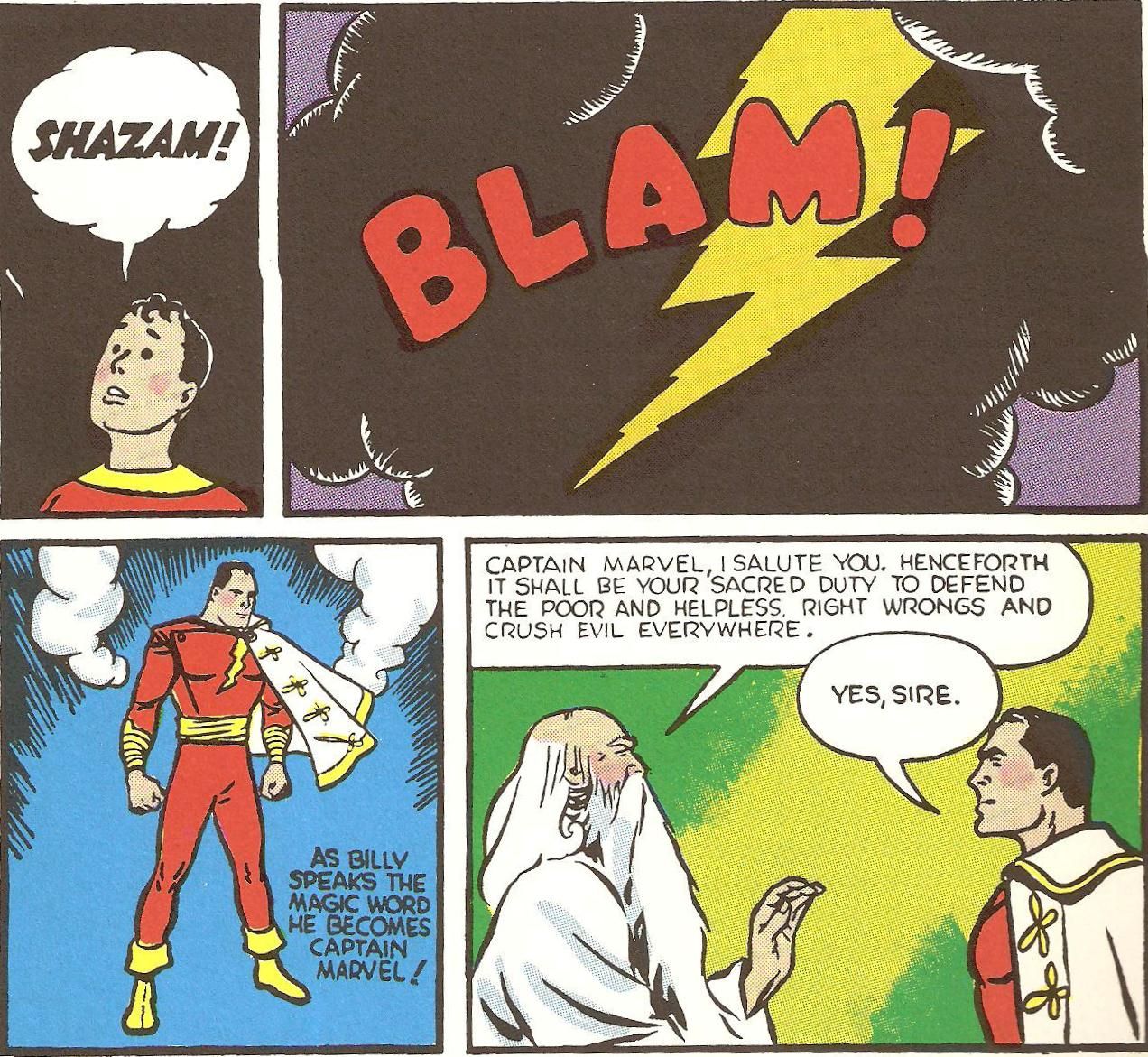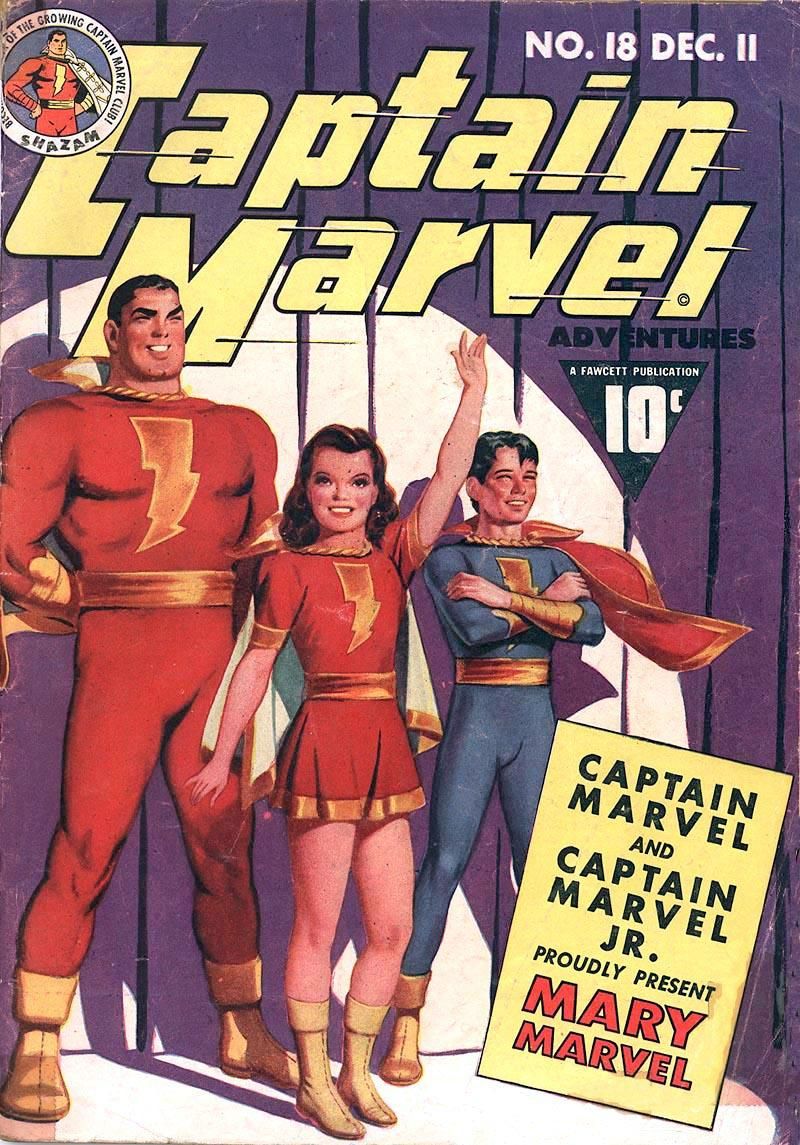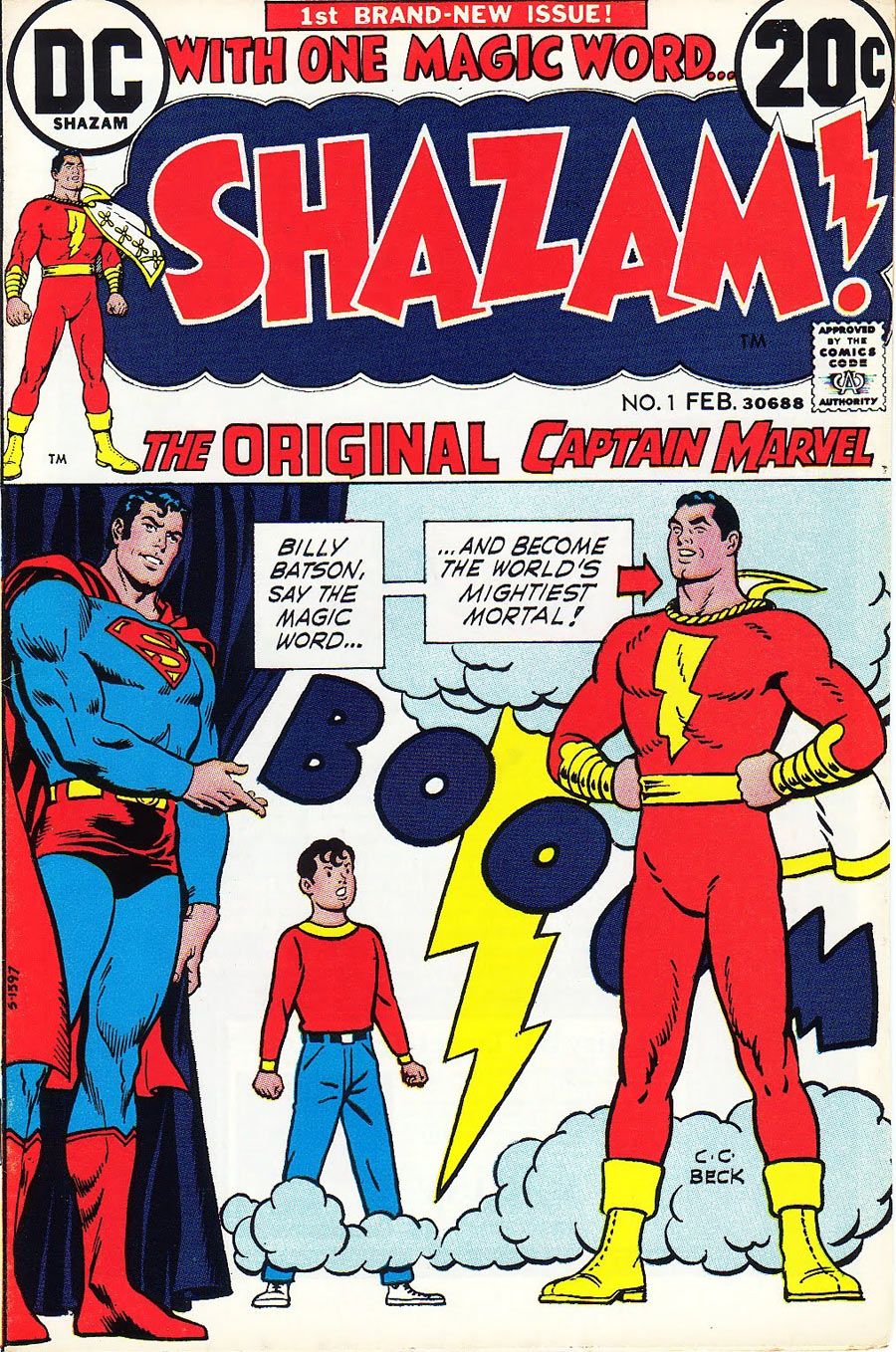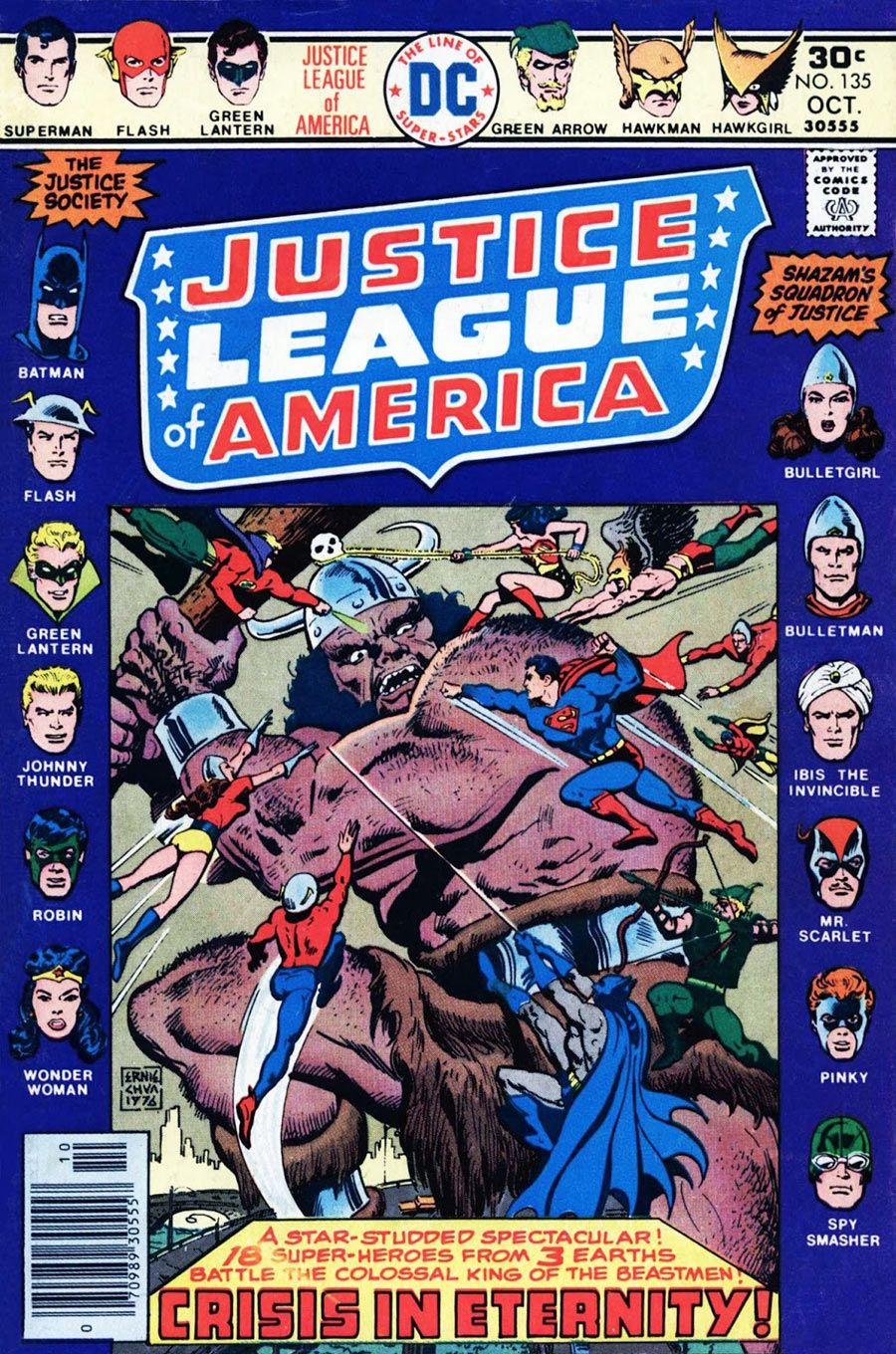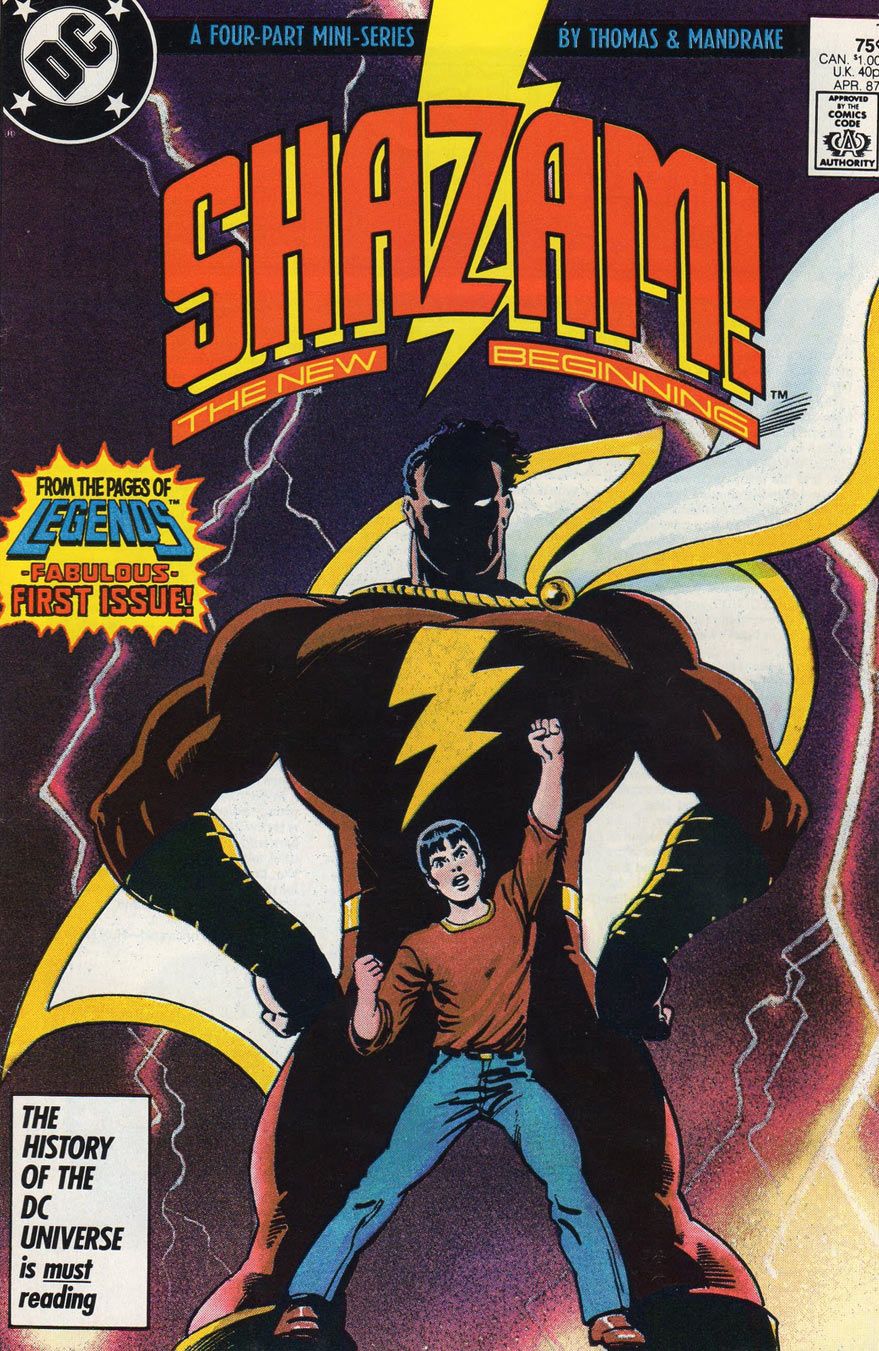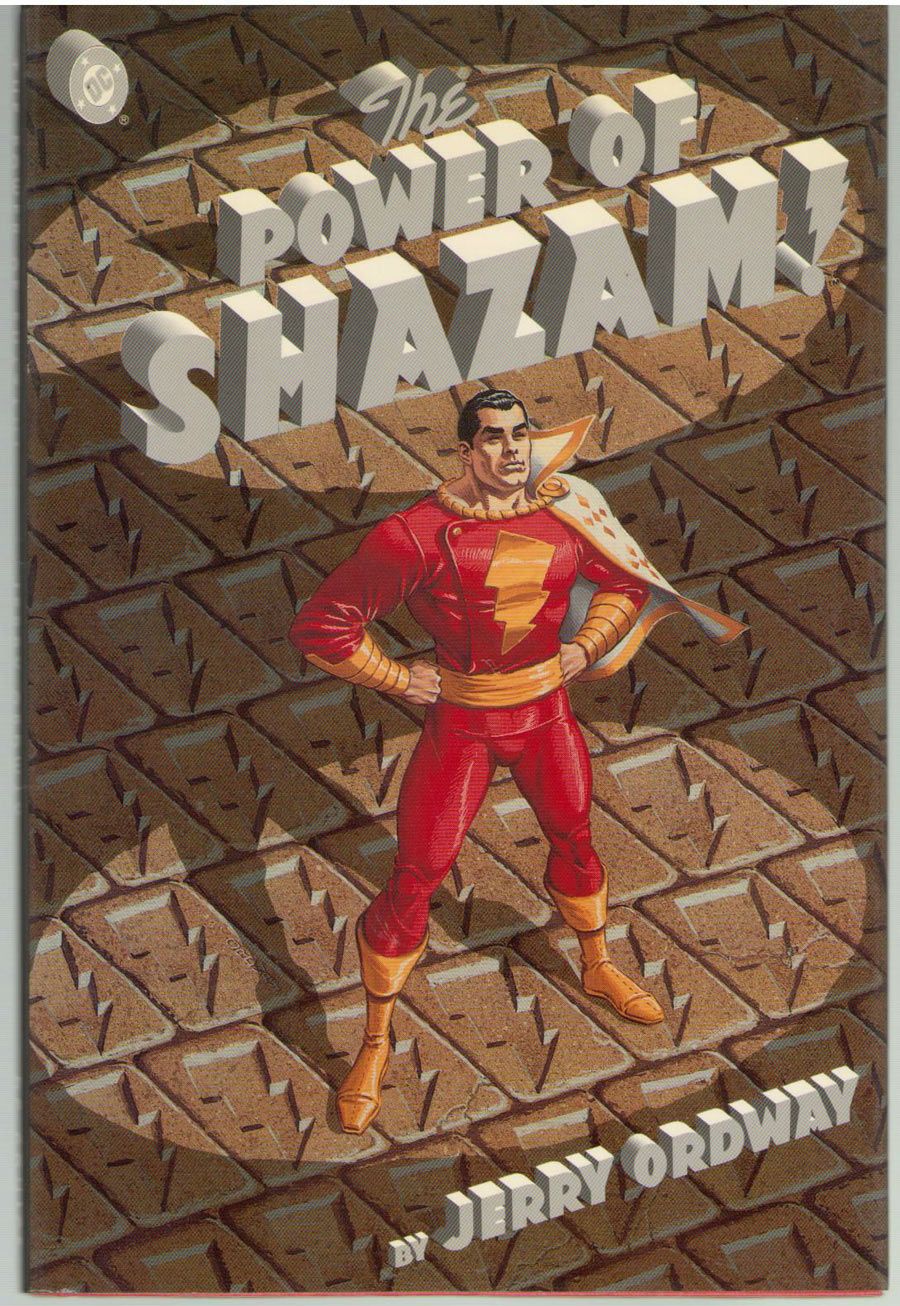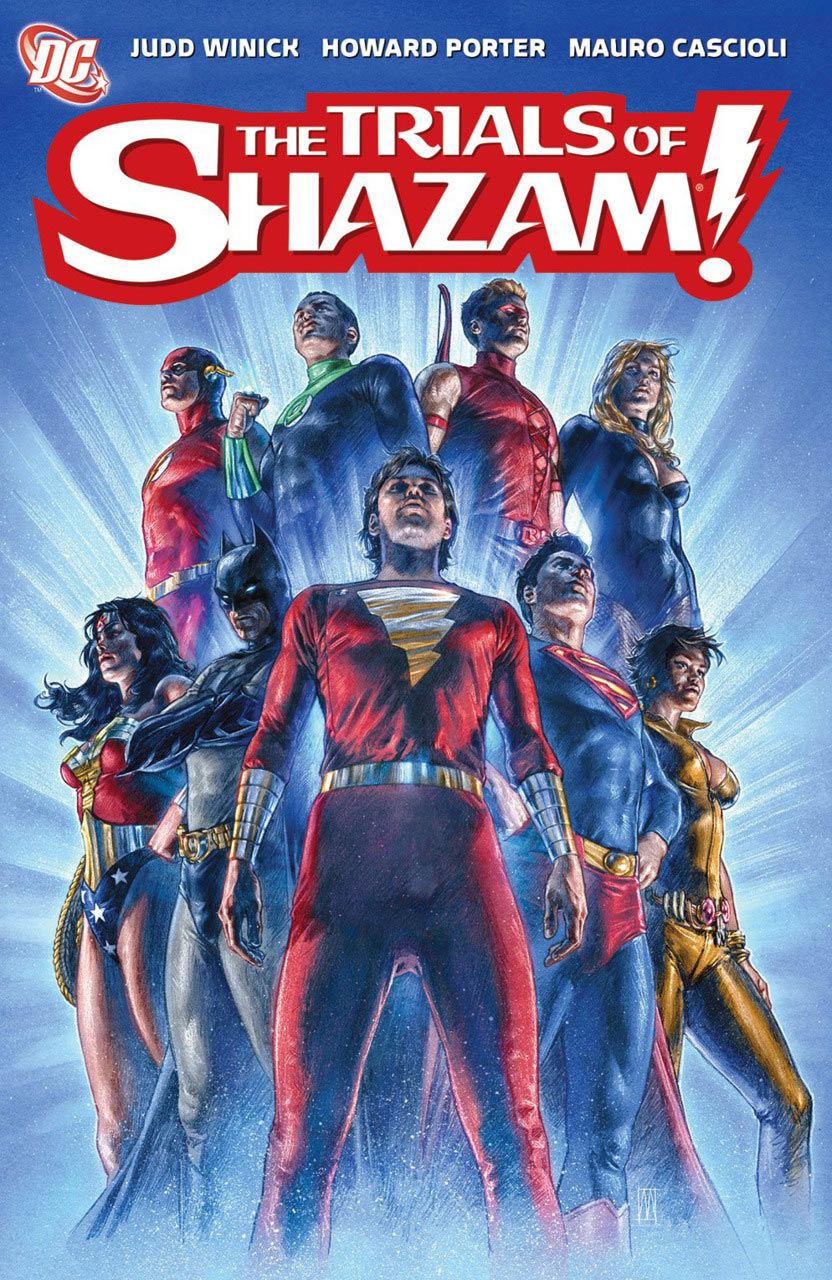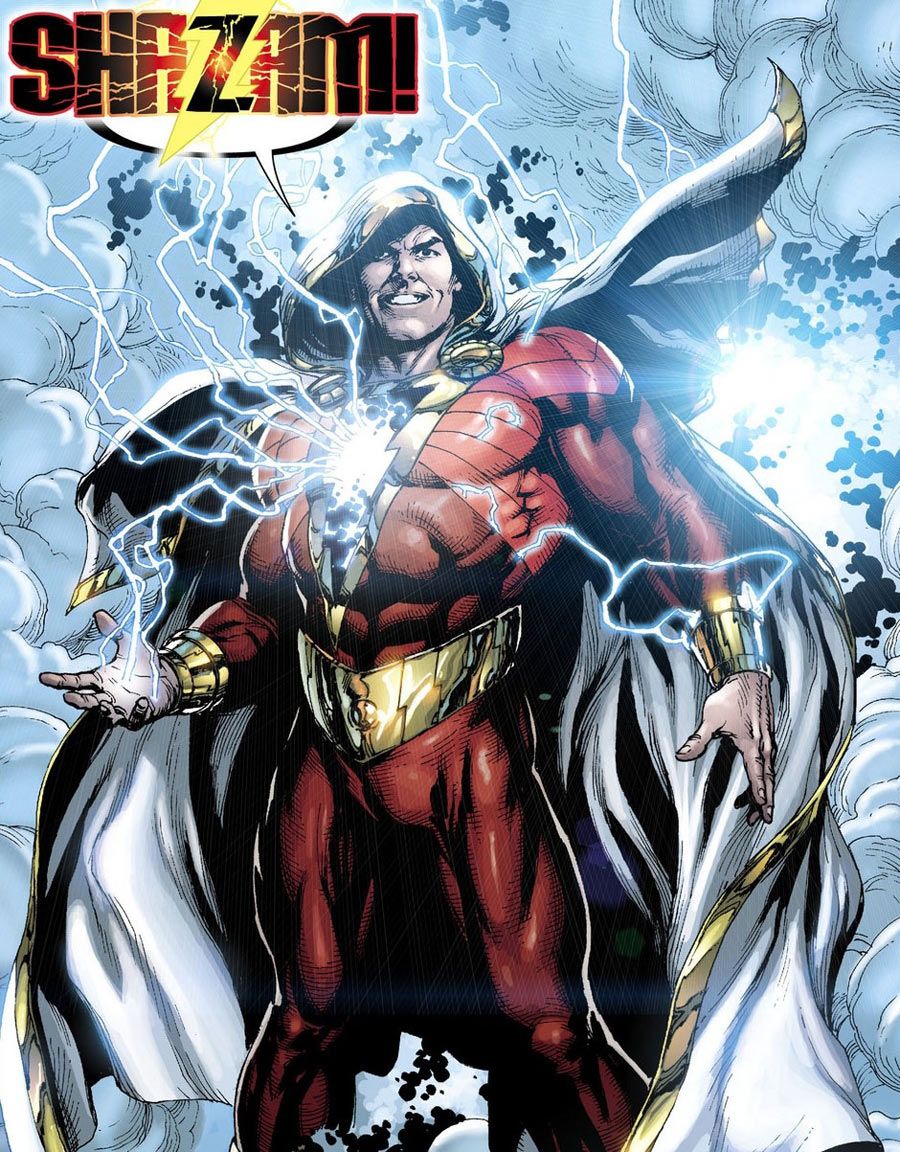The rumor mills are grinding. There is a rumbling that Warner Bros. and DC Entertainment are planning a "Shazam" film as part of its burgeoning cinematic universe, and Dwayne "The Rock" Johnson has been tweeting and teasing his involvement with the project, either as the titular hero or the adversarial Black Adam. It seems an official announcement regarding a "Shazam" movie is imminent, but before that news strikes like lightning, CBR takes a look at the long and often complex history of the character.
Origins, Re-naming and Lawsuits, AKA: The Early Years
In the waning days of 1939, a crack of thunder resounded through the neophyte comic book industry. A year earlier, National Periodic Publications introduced Superman to an unsuspecting and suddenly superhero-hungry public, and soon followed the Man of Steel's success with Batman. Competitor Fawcett Publications wanted in on the superhero action and created a character that would rival Superman and Batman's popularity throughout the War years. Fawcett turned to staff writer Bill Parker and artist Charles Clarence "C.C." Beck to create a champion that would endure for decades. While the character would go on to enjoy enduring popularity, and be known most commonly among non-comics readers as Shazam, right out of the gate Parker & Beck's creation experienced a problem that would plague him for generations to come -- his name.
At first, Parker and Beck called the new character Captain Thunder and planned to have their hero star in a book called, initially, "Flash Comics," later changed to "Thrill Comics." Fawcett produced ashcan copies of both books for trademark purposes and the world had their first exposure to Captain Thunder. The only problem was other companies held the trademark for Captain Thunder, "Flash Comics" and "Thrill Comics," so Fawcett changed the name of their hero to Captain Marvelous! The name was quickly shortened to Captain Marvel and the name of the anthology he would be featured in was changed to "Whiz Comics." After three name changes, comics readers were finally ready to be exposed to the world of Shazam!
And what a world it was. Parker and Beck created an iconic origin for their new character, one who has undergone very few changes in the intervening decades.
Beck's breezy artwork helped set the tone for the series. His world was light and hopeful, borrowing more from classic cartooning than the burgeoning world of comic book art. The colors popped off the page, and Beck's sense of character design set his world apart from those that had popped up since Superman made his debut. The world of Fawcett was one of daylight, a futuristic but comforting world that was intensely inviting to new readers -- and they responded in droves. Beck and Parker took everything that worked for Superman and transplanted it all into the body of a relatable 10 year-old child. Billy Batson was a stand-in for comics' young readership, and through him the world of superheroes opened to young, War-era readers. While Billy represented the readers, Captain Marvel -- whose visual appearance was, according to Beck, based on actor Fred MacMurray -- served as an analog for the absentee fathers who were off fighting the war, or a big brother many young readers could imagine turning into to beat up a bully. It was a good-natured power fantasy for an increasingly violent and frightening world.
Like Clark Kent, Captain Marvel's alter ego was a reporter. Billy Batson was also throwback to the Dickensian era orphan who lived on the streets before the day he entered a mysterious subway car and was granted the powers of Shazam by a mysterious wizard. When Billy received his powers, his problems were solved. By saying the word Shazam, which stood as an anagram for six Greek gods -- Solomon, Hercules, Achilles, Zeus, Apollo and Mercury -- Billy was granted the powers of myth. Soon, he was adopted into a nice foster home, somehow got a job as a radio broadcaster and became the champion to the oppressed and downtrodden. It wasn't long before the adventures of Captain Marvel outsold any other superhero, including Superman and Batman.
In addition to starring in "Whiz Comics," the good Captain graduated into his own series, "Captain Marvel Adventures," and with each successive issue, the world of Captain Marvel grew. Soon, the hero had his own recurring rogues gallery. To act as counterpoints to their light and hopeful hero, Parker and Beck introduced Dr. Sivana, a bent and twisted scientist who used his mind to outwit and destroy Captain Marvel, whom Sivana dubbed The Big Red Cheese. Along with Sivana, Captain Marvel fought Mr. Mind, the World's Wickedest Worm, a recurring villain who went on the star in comics' first long form serialized story "The Monster Society of Evil." Captain Marvel also fought the evil robot Mr. Atom; the barbarian despot King Kull; crocodile men; his own dark counterpart Black Adam; and even Hitler, Tojo and Mussolini. In addition to villains, the series introduced Uncle Dudley, a W.C. Fields-inspired comic relief character who helped care for Billy, Tawky Tawny, an anthropomorphic talking tiger who was also an old world gentleman, and many more friends and allies.
As the Captain's popularity grew, Fawcett met this demand by adding derivatives of the Captain to their publishing library. This practice of creating youthful, female or even animal forms of the character would become a trope that would go one to inform almost every major hero. Without Mary Marvel and Captain Marvel Jr., there might not have been a Supergirl, Superboy, Batwoman, Batgirl, She-Hulk, Spider-Woman, Wonder Girl, Kid Flash or any of Superman's pets. With the introduction of Junior and Mary, Fawcett had the first empire in comics. Billy's sister Mary starred in her own solo title and "Wow Comics," while Captain Marvel Jr., the blue-clad ego of crippled newsboy Freddy Freeman, starred in "Master Comics" with groundbreaking artwork by the great Mac Raboy and his own title, also with art by Raboy. All three heroes starred in "Marvel Family," while the original Captain Marvel continued to star in his own feature and "Whiz" while also lending his sales might to a number of other Fawcett anthologies. Fawcett introduced Hoppy the Marvel Bunny in the pages of "Fawcett's Funny Animals "#1 (Dec. 1942) and soon, even the Shazam rabbit graduated into his own title. The three main Marvels -- Captain, Mary and Junior -- starred in the "Marvel Family" team-up book. All of the titles were a success and all the different characters had a loyal following. Elvis Presley himself was a devout Captain Marvel Jr. fan and even copied the basic design of Junior's costume for his own intricate stage regalia.
Fawcett tried publishing other other characters in addition to the Marvels, with Bulletman, Mr. Scarlet and Pinky, Ibis the Invincible, Spy Smasher and Minute Man all debuting to varying degrees of success, but it was very clear Fawcett was the house that Captain Marvel built, and through their Captains, Fawcett also ruled the comic book racks.
The success didn't go unnoticed by rivals, and National, owners of Superman, sued Fawcett due to the fact that Captain Marvel was very similar to National's Man of Steel. In a complex series of events, as the Golden Age waned along with the popularity of the superhero genre, Fawcett gave up and Captain Marvel was no more. After the War, kids turned to western and sci-fi characters. Captain Marvel was a victim of revolving readership and the advent of television and other forms of entertainment. The thunder was silenced, and it would be a long time before the Big Red Cheese would again grace the pages of a comic book.
The Bronze Age and the DC Years
In settling with National, now known as DC Comics, Fawcett agreed to never publish Captain Marvel again. By 1972, thanks to the advent of Marvel Comics and other factors, such as the Batmania craze of 1966-1968, superheroes were popular once again. DC publisher Carmine Infantino, always looking for ways to solidify his comic line, bought the rights to Captain Marvel with hopes that the character who once ruled the comic book scene would bolster DC's heroic roster. DC began to plan the return of the lost hero, but before the good Captain could be featured once again, DC had to solve a problem that had tortured the property since day one: the character's name.
You see, in the intervening years between Captain Marvel's last appearance and 1972, there was another company that had made the name Marvel popular. In fact, Marvel Comics had introduced its own Captain Marvel, a space faring Kree warrior, so there was no way DC could print the word "Marvel" on their new feature's covers. So, while he continued to be called Captain Marvel in the story, any title starring the Big Red Cheese would be known as "Shazam." The magic word had become a proper name and that name would follow the good Captain to toy shelves, animation and Saturday morning television.
With the comic finally named, DC premiered "Shazam!" #1 in 1973. It wasn't just Captain Marvel that was brought to the modern day, but Fawcett's entire cast of characters. Instead of just the one hero, Fawcett's entire line was resurrected under the watch of writer Denny O'Neil and C.C. Beck himself. O'Neil was quickly replaced by Elliot S. Maggin and E. Nelson Bridwell on writing, while Beck departed after issue #10. The legendarily persnickety Beck did not function well in the modern comic environment, and his bright, hopeful art style simply did not fit into the more sophisticated expectations of the modern reader. Looking at it now, the book was a delight, a fresh and honest take on Captain Marvel and his family, but while it did launch to tremendous expectation and fanfare, the hero and style from a simpler era failed to catch on.
This era of Captain Marvel was marked by simple stories and tons of great Golden Age reprints. Any modern day fan can grab one of the 100-page issues of "Shazam!" cheap at a convention and enjoy a full afternoon of awesome comic book history. Things continued in the cartoony, fun vein for Captain Marvel until the end of his series where Bridwell, along with artists Alan Weiss, Joe Rubinstein and Don Newton, took Captain Marvel in a more realistic direction. Gone were the kid-friendly tributes to yesterday as "Shazam" was updated for a new generation of comic readers.
It lasted two issues.
Despite the relaunch not catching on, DC wasn't done with the Fawcett properties. To incorporate Captain Marvel and his family into the DC Universe, the powers that be decided Captain Marvel's adventures took place on Earth-S where Cap, his family and the rest of the Fawcett heroes dwelled. This led to a crossover between the Fawcett heroes and the Justice League in "Justice League of America" #135-137, which featured the first DC appearance of the other, non-Marvel Fawcett heroes. Through this crossover, Captain Marvel was now firmly entrenched in the DC Universe. Their adventures continued in the pages of "World's Finest" and then "Adventure Comics," but it was clear the character that once rivaled Superman and Batman was now relegated to guest roles and back-up features. Cap was featured in "All-New Collectors' Edition" #C-58 (April 1978) which featured a "Superman vs. Shazam!" story by writer Gerry Conway and artists Rich Buckler and Dick Giordano, but as awesome as that oversized clash between two great, heroic titans was, it still failed to achieve the success Captain Marvel and his rich history deserved.
The Marvel Family factored into DC's universe-reshaping "Crisis on Infinite Earths," and when the dust settled, Captain Marvel was incorporated into DC's new, single Earth as one of a number of characters given a fresh coat of paint and new lease on life.
The Post-Crisis Years
It was a time of energy and new ideas for all the heroes of the DC Universe. Captain Marvel's first post "Crisis" appearance was in the pages of "Legends" in 1986. From there, Billy Batson's alter ego joined the new "Justice League" title written by the legendary duo of Keith Giffen and J.M. DeMatteis, whose humorous take on the Justice League became one of the most beloved runs of the era. However, Captain Marvel was quickly removed from the smash hit title to star in his own book.
"Shazam: The New Beginning" was published in 1987 and written by the prolific creator of so many great Silver and Bronze Age moments, Golden Age scholar Roy Thomas. Aided by his wife Dann and artist Tom Mandrake, Thomas' mini featured a modern day retelling of Cap's origin along with the introduction of refreshed versions of Doctor Sivana, Black Adam and Uncle Dudley. It was a fascinating take on the Captain Marvel legend by a writer who revered the source material but knew which aspects needed to be updated. The biggest change the reboot made to the character was that Captain Marvel became an extension of Billy Batson, whereas before, Billy and the Captain were two separate entities. The idea of Billy being in control remains the status quo even now.
Roy and Dann Thomas' take on the character could have been a fabulous direction to take Captain Marvel, but alas, the miniseries and a brief feature in "Action Comics Weekly" were the only times the Thomases were able to work their magic on Captain Marvel. A monthly "Shazam" series promised in an "Action Comics Weekly" letter column never materialized, and the character enjoyed sporadic appearances around the DCU in places like "Final Night" and "War of the Gods," but he was once again relegated to a supporting role.
Until Jerry Ordway.
The Power of Shazam!
In 1994, writer/artist Jerry Ordway went back to Captain Marvel's roots in the "Power of Shazam!" graphic novel. This long form retelling of the hero's origins stuck very close to Fawcett original tale, with a few exceptions. For one, it was revealed that Billy's father was the inspiration for Captain Marvel's physical appearance, so, essentially, when Billy says "Shazam," he transformed into his murdered father. Second, it was the villain Black Adam who killed the elder Batson. Before this revelation, Black Adam was just another villain, one who played second fiddle to Sivana and Mr. Mind, but now, this rivalry defined Captain Marvel's origins.
Aside from those two changes, rather than attempt to modernize the world of Captain Marvel, Ordway embraced the gentleness of the concept and characters, and seemed to take a special kind of glee in bringing back all of Fawcett's old concepts. Noticing the success of the graphic novel, DC launched a "Power of Shazam!" ongoing in 1995, with Ordway on writing and art. The series brought back just about all of the old Fawcett concepts, from Mary and Junior, to Captain Marvel's rogues gallery, to the pantheon of non-Marvel Fawcett heroes -- even Hoppy the Marvel Bunny played into the series! All things Captain Marvel and Fawcett were fair game, and Ordway seemed to be having the best time of his career. It all ended in 1999, but the series stands as a testament to the potential of the character and speaks to the pure, unapologetic fun that the hero can inspire in a creator.
During the same era, Captain Marvel played a major, adversarial role in Mark Waid and Alex Ross' "Kingdom Come" as a brainwashed flunky of Lex Luthor's. Who can forget the epic battle between Superman and Captain Marvel in the series' third act? Seeing the good Captain, a character fans embraced as the purest of spirit even to the point of hokeyness, tainted by Luthor was one of the book's most potent moments.
Between, "Kingdom Come," and "The Power of Shazam!" the mid-'90s, an era often maligned for its excess by historians, was a second golden age for Captain Marvel, and more great things were to follow when Captain Marvel joined a team it always seemed that, somehow, he should be a part of.
The JSA Years
Like Captain Marvel, the Justice Society of America was a throwback to the earliest comic books. Writers James Robinson, David S. Goyer and Geoff Johns designed their take on the classic team to pay tribute to yesterday's greatest heroes while updating their legacy for modern readers. It was a great fit for Captain Marvel, who became an important part of the team as he formed bonds with many classic characters. Johns and Co. really played up both aspects of Captain Marvel, having him be an equal to Jay Garrick, Alan Scott and the rest of the senior Society members, but also a peer to young heroes like Jakeem Thunder, Star Girl and Cyclone. Captain Marvel's time with the JSA really played with the dichotomy of the character, a young man with sage like wisdom who looks and is expected to act like an adult. In the series, Cap was unapologetically wide eyed and innocent but still possessed the wisdom of Solomon. Johns found everything that made the character special, making sure that the character had his own unique purpose in the DC Universe instead of being treated like a derivative Superman rehash. The time Captain Marvel spent as a member of the JSA were some of the most compelling and effective years the character had ever enjoyed, and showed he could still be a bright and innocent character while maintaining a defined place in a modern comic universe.
Infinite Crisis and Trial of Shazam
The 2005 miniseries "Superman/Shazam: First Thunder," written by Judd Winick with art by Josh Middleton, was the first meeting in many years between the classic version of Captain Marvel and the character for whom Fawcett was sued for sharing too many similarities, Superman. It also proved to be the last time the classic versions of the characters would ever meet.
Captain Marvel and his family played a major role in "Infinite Crisis," or at least Black Adam did, as Geoff Johns used the Marvel Family as a template in the creation of the Black Marvel Family, which consisted of Adam's newly introduced wife Isis, the Captain Marvel Jr. dark template, Osiris and a giant crocodile named Sobek. Always a student of comic history, Johns chose Isis to be part of this new Marvel Family because a version of the character once was co-featured with Captain Marvel in the 1970s live-action Saturday morning series, "The Shazam-Isis Power Hour." "Infinite Crisis" also featured the murder of the wizard Shazam at the hands of the Spectre, an event which drastically changed the direction of the Marvel Family.
The murder of Shazam led to Billy taking up the mantle of his former mentor. Freddy Freeman, the former Captain Marvel Jr., had to go through six trials, one for each god that spelled out the acronym SHAZAM, to prove himself worthy of being Billy's replacement. These trials were related in "The Trials of Shazam!" a 12-issue maxi-series written by Judd Winick and illustrated by Howard Porter and Mauro Cascioli. When the dust of the trials settled, instead of being just another super strongman, the bearer of Shazam's powers was now a magical warrior who stood between Earth and the mythic forces of darkness. The book was solid, but it proved too different from what fans of the character expected. Soon, in the pages of the "Justice Society of America," Johns undid most of the changes that took place in "Trials" by having Black Adam sacrifice his powers to resurrect the wizard. With Billy back in the red, white and gold, most of the changes in the world of Captain Marvel now focused on Mary Marvel, who became an S&M bad girl in the pages of "Countdown to Final Crisis" and "Final Crisis." There was never a follow-up story that saw the ramifications of the return of the Wizard for Freddy, because the entire DC Universe underwent its most dramatic change, ever.
Shazam and the Monster Society of Evil
Before we arrive at the current incarnation of the character, it just wouldn't be right not to discuss Jeff Smith's 2007 miniseries, "Shazam and the Monster Society of Evil," another take on the origin of Captain Marvel, this time outside of DC continuity. The series captured everything special about the character, presented in Smith's signature, animated style. DC continued to develop Smith's world with a young reader series by "Herobear and the Kid" creator Mike Kunkel, entitled "Billy Batson and the Magic of Shazam!" Both series are well worth seeking out because they capture the Beck style perfectly while delivering themes and stories that fit the modern day.
The New 52
It was clear there was more story to tell for Captain Marvel and his family, but they were all aborted when the DC Universe was rebooted in September 2011 as the New 52. As a backup feature in the newly-relaunched "Justice League," Johns and artist Gary Frank introduced a new Captain Marvel, but now, his name had been changed to Shazam. The skeleton of the classic origin was adhered to, but this new Billy Batson was a street-wise, morally ambiguous, smart-mouthed young man who was very different from the classic "Aw, shucks" Billy of decades past. Johns and Frank also introduced a group of kids that shared a foster home with Billy, including Mary and Freddy along with some new friends for this new, edgier version of Billy to pal around with. Johns also reintroduced Dr. Sivana as a villain and a New 52 version of Black Adam.
RELATED: Geoff Johns Reveals New Shazam Details
After the feature ended, Shazam joined the Justice League. This new version of the character is brash and quick-tempered, a far cry from the humble, big lug of old. But times change, and if he is too endure, Shazam must change as well. With a film supposedly on the horizon and with the character front and center in the DC Universe -- and also the subject of a rumored new comic series -- it's clear that the legend that Bill Parker and C.C. Beck started so many years ago will continue to be huge part of the modern superhero landscape.

